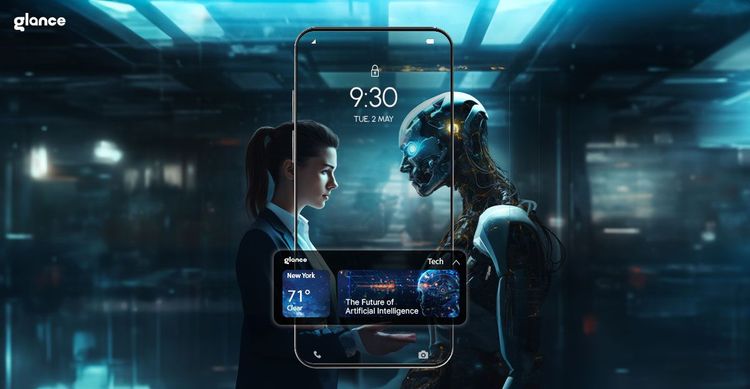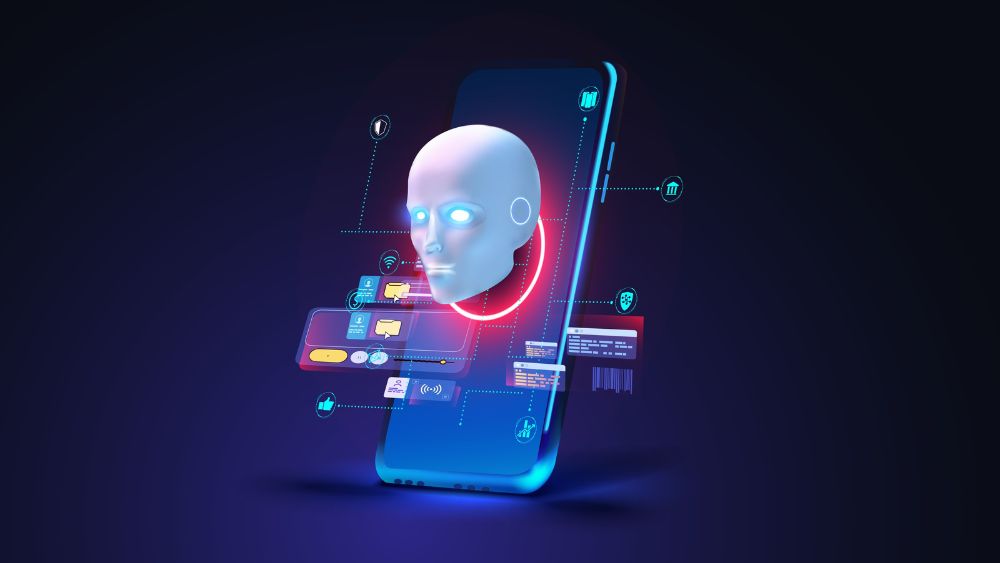“`html
How Generative AI is Transforming Smartphones
Estimated reading time: 10 minutes
Key Takeaways
- Generative AI is rapidly changing smartphones, enhancing user interaction and content creation.
- On-device AI offers enhanced privacy and speed by processing data locally.
- Current smartphones already feature AI for image editing, personal assistants, and personalized recommendations.
- Generative AI enables advanced content creation, more intelligent assistants, and enhanced accessibility.
- The AI smartphone market is experiencing significant growth, with generative AI-enabled devices set to dominate shipments.
- The future promises hyper-personalization, proactive assistance, and novel interactions, but also presents challenges in privacy and security.
Table of contents
The smartphone in your pocket is no longer just a communication device; it’s rapidly evolving into an intelligent companion, powered by the incredible advancements in artificial intelligence. The pace of change is astonishing, with smartphones becoming more integrated into our lives than ever before. At the forefront of this revolution is generative AI, a technology that is not just enhancing existing features but fundamentally reshaping what a smartphone can do. We are witnessing the dawn of an era defined by AI-powered mobile innovation, and understanding how generative AI is transforming smartphones is key to grasping the future of personal technology. This blog post will delve into the profound impact of generative AI on smartphones, exploring its current capabilities, market dynamics, and what lies ahead, as indicated by foundational research on generative AI in smartphones. This new wave of innovation promises to revolutionize user interaction, enable advanced content creation, and usher in a new era of personalized mobile experiences, as highlighted by insights from everphone.com and Deloitte. Furthermore, the potential of platforms like Apple Intelligence underscores the growing significance of these AI-driven advancements.
Understanding Generative AI on Smartphones
Before diving into the transformative impact, it’s essential to understand what generative AI is. In simple terms, generative AI refers to a sophisticated type of artificial intelligence capable of creating new, original content—this can include text, images, music, code, and more—by learning from vast datasets. Think of it as an AI that doesn’t just analyze information but can *generate* new information based on patterns it has observed. As explained by everphone.com, its application directly on smartphones offers significant advantages.

One of the most compelling benefits of implementing generative AI on smartphones is the enhancement of user privacy and speed. When AI processes occur directly on the device, the sensitive data used for these operations doesn’t need to be sent to external servers. This is a crucial distinction. We can differentiate between “cloud-based AI,” which relies on constant internet connectivity and can raise privacy concerns due to data transmission, and on-device AI capabilities. The latter operates offline, offering a much higher degree of data security and faster response times because the processing happens locally. This shift towards on-device AI is a key trend, as also noted by Deloitte, promising a more private and efficient user experience. The ability of AI to transform various aspects of our digital lives is profound, as discussed in this article.
Current On-Device AI Capabilities in Smartphones
Generative AI’s impact isn’t just theoretical; it’s already present in many smartphones, enhancing our daily interactions in subtle yet powerful ways. These existing applications showcase the tangible benefits of having AI integrated directly into our devices.

Consider the realm of photography. We now have features that go beyond simple enhancements. Intelligent image editing uses AI to automatically improve photos, remove unwanted objects, or even generate new visual content, making professional-level edits accessible to everyone, as highlighted by everphone.com and this guide.

Our interactions with personal assistants have also seen significant leaps. AI-powered personal assistants are becoming more adept at understanding natural language, recognizing user emotions, and engaging in more complex, contextual conversations, moving beyond simple commands. This evolution is also detailed by everphone.com and touched upon in discussions on virtual assistants.

Communication is faster and more seamless thanks to AI. Features like automated translation provide real-time language conversion, breaking down communication barriers. Similarly, predictive text has become more sophisticated, offering personalized suggestions that learn from your writing style, speeding up typing considerably. These advancements are part of the new wave of features, as seen in the latest OS updates.

Beyond content creation and communication, AI is personalizing our mobile experience. Personalized recommendations for apps, content, news, and even app layouts are now tailored to individual user behavior and preferences, making our smartphones feel uniquely ours. This is also evident in features like those found on the Google Pixel 9, which leverage AI extensively.

Underpinning these capabilities are powerful hardware and software innovations. Smartphones are increasingly equipped with specialized AI-optimized chipsets, such as Apple’s Neural Engine, and operating systems meticulously engineered to handle complex AI tasks efficiently. These elements are crucial for enabling advanced on-device AI capabilities, a trend that Deloitte identifies as a major driver in the smartphone market. The integration of AI into these core components, as seen with the Google Pixel 9, is setting new standards.
The Transformative Impact of Generative AI on Smartphones
While existing AI features are impressive, generative AI is poised to elevate smartphone functionalities to an entirely new level, moving beyond incremental improvements to offer genuinely transformative capabilities.

One of the most exciting areas is advanced content creation. Generative AI is democratizing creativity, empowering even non-experts to generate sophisticated content. Imagine creating realistic 3D models from simple descriptions, automating complex video editing tasks, or producing high-quality images and media through text prompts alone. This potential is vast, as discussed by everphone.com, and research suggests generative AI could bring millions of apps into 3D reality. This aligns with explorations of creative tools, such as comparing the iPad Pro and Surface Pro for creative tasks.

Our AI assistants are also becoming significantly more intelligent. Instead of just answering questions, future AI assistants will be capable of handling complex planning tasks, like organizing entire vacations, booking appointments, and providing context-aware, real-time support throughout your day. The evolution of these assistants is a key area of development, as evidenced by the excitement around AI-powered virtual assistants.

Generative AI is also set to bring about major advancements in enhanced accessibility. Features like real-time, highly accurate captioning for any audio or video content, and dynamically personalized interfaces that adapt to an individual’s specific needs and abilities, will make smartphones more usable for a wider range of people, including those with disabilities. This is a core aspect of forthcoming innovations like Apple Intelligence on the iPhone 16.

Perhaps one of the most profound impacts will be in personalized app experiences. Generative AI can lead to hyper-personalization, where the entire smartphone environment—from the home screen layout and app suggestions to notifications and even the user interface of individual apps—adapts dynamically to individual user needs, preferences, and current context. The Google Pixel 9 and similar devices are already hinting at this level of adaptation.

These advancements collectively represent a paradigm shift, fueling the ongoing trend of AI-powered mobile innovation, pushing the boundaries of what we expect from our mobile devices.
“AI Smartphone Market Trends”
The impact of generative AI is not just technological; it’s profoundly reshaping the smartphone market itself. Understanding these AI smartphone market trends is crucial for both consumers and industry players.

Projections indicate a significant surge in AI-enabled devices. According to Deloitte, it is predicted that by 2025, generative AI-enabled devices will constitute over 30% of all smartphone shipments. This demonstrates a massive and rapid adoption of AI-centric features, a trend that has caught the attention of major players like Apple and Samsung.

To support these advanced AI capabilities, manufacturers are heavily investing in embedding powerful AI chips into their devices. This focus on on-device generative models is not only enabling new features but is also influencing upgrade cycles. Consumers are increasingly seeking premium smartphones that can handle these sophisticated AI tasks, driving demand for devices with cutting-edge processors and enhanced AI performance, as noted by Deloitte. This push for innovation means devices like the Google Pixel 9 are becoming highly sought after.

Consumer demand is a powerful force, and the desire for features like AI-powered photography, proactive digital assistance, and deep customization is significant. Smartphone brands that can effectively deliver on these AI-driven expectations gain a substantial competitive advantage. As Deloitte points out, this is creating a dynamic market where AI capabilities are becoming a primary differentiator. This renewed focus on groundbreaking innovation is revitalizing a market that, prior to the AI surge, was often characterized by incremental improvements, as discussed in relation to even budget smartphones.
These technological shifts are fundamentally altering consumer expectations and the competitive landscape, making AI not just a feature but a core component of modern smartphone design and marketing.
The “Future of AI Smartphones”
Looking ahead, the trajectory of the future of AI smartphones is incredibly promising, with generative AI at its core. We are on the cusp of a new generation of mobile devices that will redefine our relationship with technology.

One of the most significant potential shifts is from the 2D applications we use today to immersive 3D experiences. Generative AI could be the catalyst for this transition, revolutionizing spatial computing and user interaction. Imagine smartphones capable of generating 3D environments from simple prompts, seamlessly integrating augmented reality (AR) and virtual reality (VR) into our daily lives. This move towards 3D is highlighted by research indicating that generative AI could bring millions of apps into 3D reality, potentially changing how we interact with digital content and bridging the gap between the physical and digital worlds, much like the innovations seen with devices like the Apple Vision Pro.
The future of AI smartphones promises devices that are:
- Hyper-personalization: Devices will go beyond simple recommendations to proactively anticipate and fulfill user needs. They will learn your routines, preferences, and context in real-time, adapting their behavior and interfaces to perfectly suit your situation. This level of deep personalization is a key promise of platforms like Apple Intelligence, and it’s a direction strongly supported by insights from everphone.com and Deloitte.
- Proactive intelligent assistance: Smartphones will evolve from being reactive tools to becoming genuine digital companions. They will offer anticipatory support, alerting you to potential issues, suggesting optimal routes, managing schedules, and providing insights before you even realize you need them. This vision of smartphones as proactive assistants is a recurring theme in discussions about AI-powered virtual assistants and future mobile capabilities discussed by everphone.com and Deloitte.
- Novel interactions: We can expect the introduction of entirely new ways to interact with our devices. This could include advanced touchless interfaces that respond to gestures or even eye movements, deeper and more intuitive AR/VR integration for both entertainment and productivity, and instant creative toolkits that allow for on-the-fly content generation and manipulation. The potential for revolutionary interfaces, as seen in AR-powered wearables, will likely extend to smartphones.

However, this exciting future is not without its challenges. As smartphones become even more integral to our lives and handle more sensitive data, critical issues surrounding data privacy, security, and ethical considerations must be navigated carefully. Ensuring robust security measures and transparent data handling practices will be paramount. These concerns are widely acknowledged, as highlighted by research from everphone.com and Deloitte, and proactive solutions such as those discussed in smartphone security guides will become even more vital.
Frequently Asked Questions
Q1: What is generative AI and how does it apply to smartphones?
Generative AI is a type of artificial intelligence that creates new content. On smartphones, it enables features like advanced image editing, realistic content creation, and more intelligent personal assistants, often processing data directly on the device for enhanced privacy and speed, as discussed by everphone.com.
Q2: Are generative AI features already available on smartphones?
Yes, many smartphones already incorporate AI for tasks like intelligent photo enhancements, predictive text, and improved voice assistants. Generative AI is expanding these capabilities to include content creation and more complex problem-solving, aligning with trends noted in Deloitte’s predictions and seen in devices like the Google Pixel 9.

Q3: What are the main benefits of on-device AI for smartphones?
On-device AI offers significant advantages in terms of privacy, as data remains on the user’s device and isn’t sent to the cloud. It also leads to faster processing speeds and improved performance, especially in areas with limited connectivity, a point emphasized by everphone.com.

Q4: How is generative AI changing the smartphone market?
Generative AI is driving significant market growth, with projections suggesting a large percentage of future smartphone shipments will feature these capabilities. Manufacturers are competing on AI performance, influencing consumer purchasing decisions and prompting more frequent upgrades, as analyzed by Deloitte.

Q5: What are the future possibilities for AI-powered smartphones?
The future holds the potential for hyper-personalization, proactive intelligent assistance, and novel interaction methods like touchless interfaces and deeper AR/VR integration. Smartphones could become truly intuitive companions that anticipate our needs, as envisioned in discussions on future AI trends and advancements like Apple Intelligence.
Q6: What are the biggest challenges with AI on smartphones?
Key challenges include ensuring robust data privacy and security, addressing potential biases in AI algorithms, and navigating the ethical implications of increasingly intelligent personal devices. These are critical areas that require ongoing attention and development, as noted by everphone.com and Deloitte.
The profound impact of generative AI on smartphones is undeniable, unlocking intelligent features, vast creative potential, and hyper-personalized experiences that were once the stuff of science fiction. As highlighted by Deloitte, the future of AI smartphones is poised for continuous, rapid innovation, set to fundamentally reshape the mobile ecosystem. The accelerating pace of AI-powered mobile innovation means we are entering an exciting new chapter in personal technology.
“`






